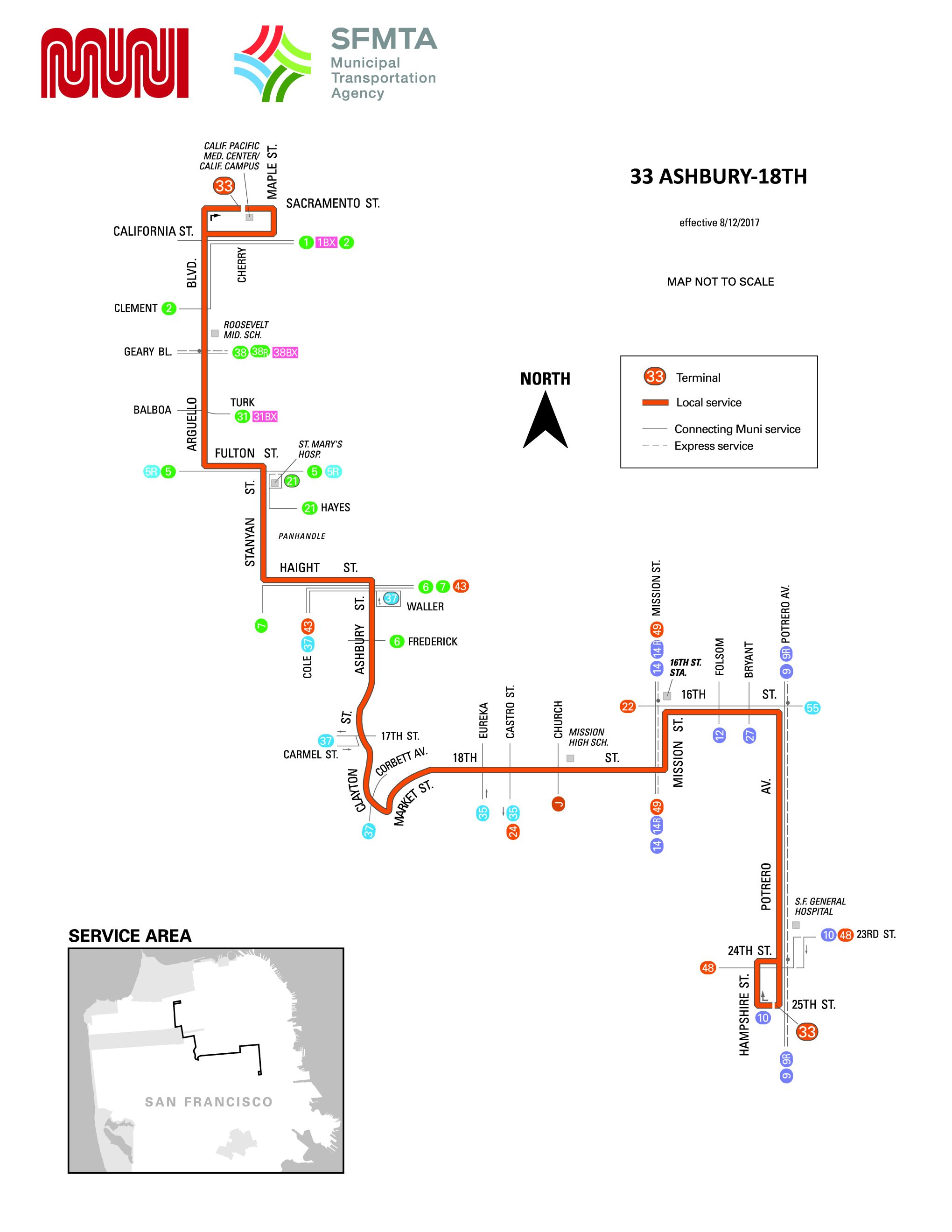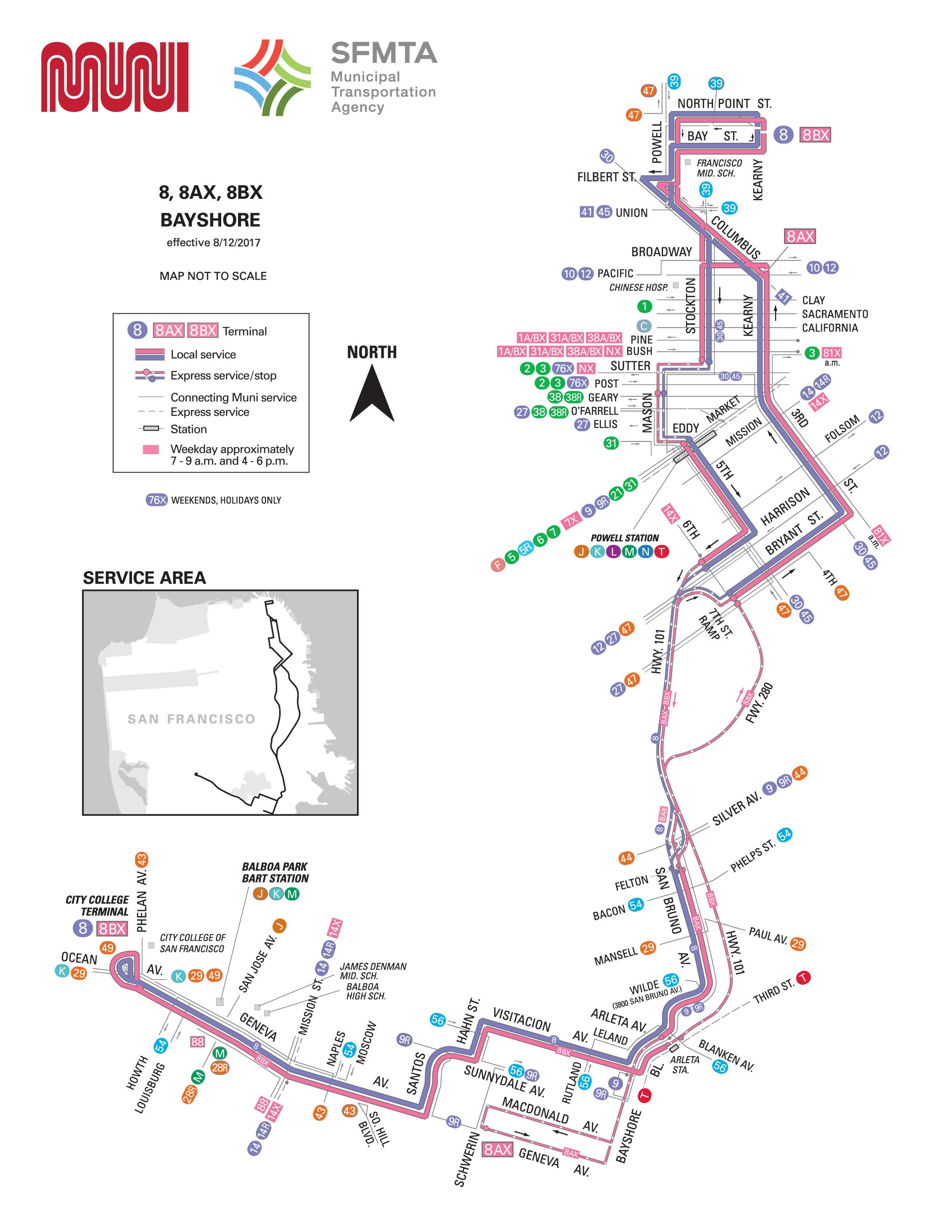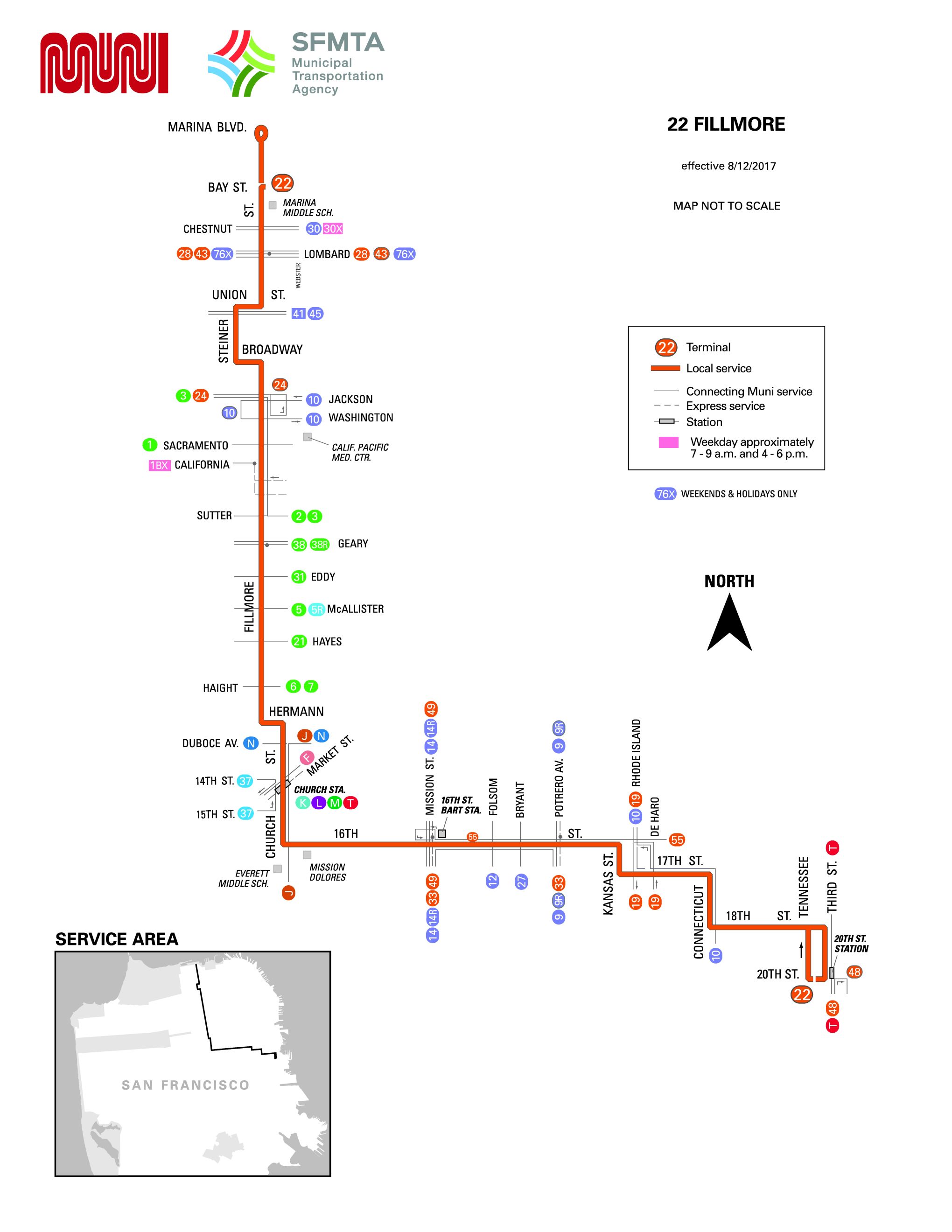


However, five heavily used streetcar lines traveled for at least part of their routes through tunnels or otherwise reserved right-of-way, and thus could not be converted to bus lines. In the 1940s and 1950s, as in many North American cities, public transit in San Francisco was consolidated under the aegis of a single municipal corporation, which then began phasing out much of the streetcar network in favor of buses. The last line to start service before 2007 was the N Judah, which started service after the Sunset Tunnel opened in 1928. By 1921, the city was operating 304 miles (489 km) of electric trolley lines and 25 miles (40 km) of cable car lines. The system slowly expanded, opening the Twin Peaks Tunnel in 1917, allowing streetcars to run to the southwestern quadrant of the city. The first streetcar line, the A Geary, ran from Kearny and Market Streets in the Financial District to Fulton Street and 10th Avenue in the Richmond District. Muni Metro descended from the municipally-owned traditional streetcar system started on December 28, 1912, when the San Francisco Municipal Railway (Muni) was established. The first street railroad in San Francisco was the San Francisco Market Street Railroad Company, which was incorporated in 1857 and began operating in 1860, with track along Market Street from California to Mission Dolores. The Central Subway, with three new subway stations and one new surface station opened on November 19, 2022.Īn outbound L Taraval PCC entering the (now demolished) eastern portal of the Twin Peaks Tunnel – the original Muni subway segment, February 1967 The T Third Street line opened in 2007, serving the southeastern portion of the city. An extension along The Embarcadero to the Caltrain terminal at 4th and King Street opened in 1998. This included the opening of the Market Street subway as well as an extension of three lines to Balboa Park station. The system was converted to light rail, with larger US Standard Light Rail Vehicles, in the late 1970s and early 1980s. The other Municipal Railway streetcar lines, and those of the privately owned Market Street Railway, were converted to buses in the 1920s to 1950s, but these five lines were retained as streetcars because of their private rights of way. Five of the current lines were added in the following decades: the J in 1917, the K (including the Twin Peaks Tunnel) in 1918, the L in 1919, the M in 1925, and the N in 1928. The San Francisco Municipal Railway was created in 1909 and opened its first streetcar lines in 1912. Muni Metro is one of the surviving first-generation streetcar systems in North America. The system has 117 stations, of which 63 (54%) are accessible. Muni Metro operates a fleet of 151 Breda high-floor light rail vehicles (LRVs), which are currently being replaced by a fleet of 249 Siemens S200 LRVs.

The supplementary S Shuttle service operates within the Market Street subway and Twin Peaks Tunnel. The T Third Street uses a north-south tunnel downtown, the Central Subway.

Operated by the San Francisco Municipal Railway (Muni), a part of the San Francisco Municipal Transportation Agency (SFMTA), Muni Metro served an average of 157,700 passengers per weekday in the fourth quarter of 2019, making it the second-busiest light rail system in the United States.įive services – J Church, K Ingleside, L Taraval, M Ocean View, and N Judah run on separate surface alignments and merge into a single east-west tunnel, the Market Street subway. Muni Metro is a light rail system serving San Francisco, California, United States. San Francisco Municipal Transportation AgencyĤ ft 8 + 1⁄ 2 in ( 1,435 mm) standard gauge An inbound N Judah train at 48th Avenue in 2019


 0 kommentar(er)
0 kommentar(er)
